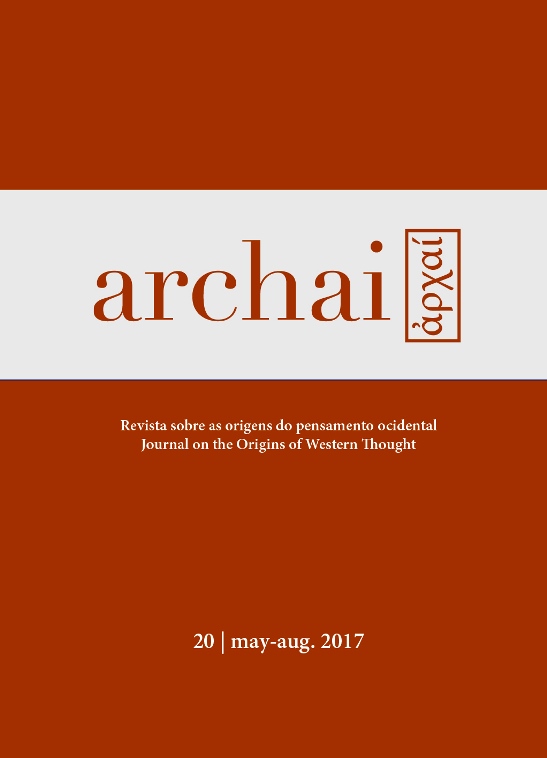Parmenides as Psychologist ”“ Part Two: DK 6 and 7
DOI:
https://doi.org/10.14195/1984-249X_20_2Resumo
The aim of this essay is to examine an aspect of Parmenides’ poem which is often overlooked: the psychological grounds Parmenides uses to construct his view. While it is widely recognized by scholars that following Parmenides’ view requires addressing mental activity, i.e. both the possibility of thinking the truth, as well as thinking along the wrong path that mortals follow, a closer examination of the psychological assumptions involved have, to my knowledge, not yet been attempted. I argue that by identifying and analyzing the psychological vocabulary in his poem, it is revealed that Parmenides was a keen observer of human mental behavior. Through these psychological (perhaps “cognitivist,” following some recent categories) observations of thought processes, Parmenides gains insight into the structure of thought itself. The outcome of this inquiry reveals three notable conclusions: First, the poem contains a remarkably extensive use of strictly psychological vocabulary. Second, the presence of this psychological material and the lack of scholarly attention to it means there is a significant aspect of Parmenides intellectual legacy that remains unexplored ”” Parmenides as psychologist, keen observer of human mental behavior. Furthermore, the recognition of this material helps shed important light on Parmenides’ philosophical message. Ultimately, I intend to provide an exhaustive treatment of Parmenides’ psychological language, which requires close examination of DK B 1, 2, 6, and 7. Due to spatial constraints, I have divided the inquiry into two parts, and will only address DK 1-2 below.
Downloads
Downloads
Publicado
Como Citar
Edição
Seção
Licença
Dado o acesso público desta revista, os textos são de uso gratuito, com obrigatoriedade de reconhecimento da autoria original e da publicação inicial nesta revista. O conteúdo das publicações é de total e exclusiva responsabilidade dos autores.
1. Os autores autorizam a publicação do artigo na revista.
2. Os autores garantem que a contribuição é original, responsabilizando-se inteiramente por seu conteúdo em caso de eventual impugnação por parte de terceiros.
3. Os autores garantem que a contribuição que não está em processo de avaliação em outras revistas.
4. Os autores mantêm os direitos autorais e concedem à revista o direito de primeira publicação, sendo o trabalho licenciado sob a Creative Commons Attribution License-BY.
5. Os autores têm permissão e são estimulados a publicar e distribuir seu trabalho on-line após a publicação na revista.
6. Os autores dos trabalhos aprovados autorizam a revista a, após a publicação, ceder seu conteúdo para reprodução em indexadores de conteúdo, bibliotecas virtuais e similares.
7. É reservado aos editores o direito de proceder ajustes textuais e de adequação do artigo às normas da publicação.



